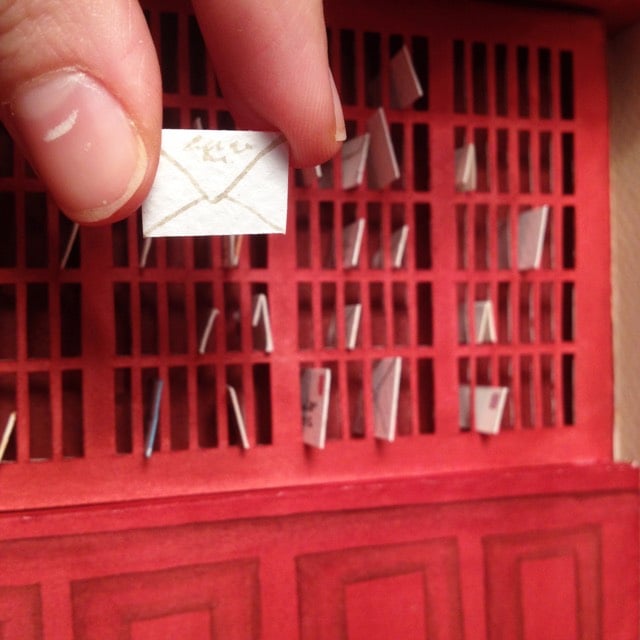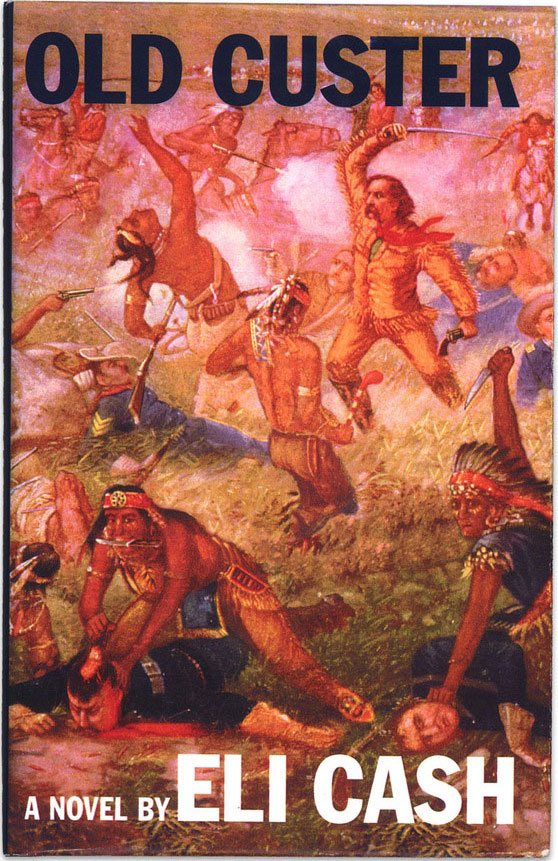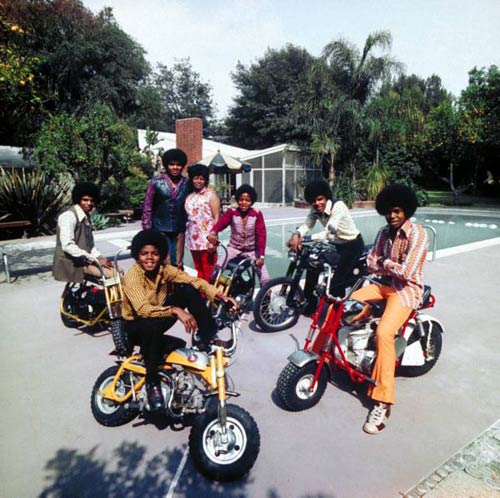

Stephen Biesty is a illustrator for books who draws “illustrations that are unrivaled for their ambitious scope and attention to detail”. I love this but somehow I hadn’t seen any of his apparently quite popular books. Many of them appear to be out of print, but there are some available on Amazon: Stephen Biesty’s Incredible Cross-Sections, Stephen Biesty’s Incredible Everything, and Into the Unknown.
Looking through these illustrations and also thinking about Richard Scarry’s books, I’m reminded of the intricate cross-sections from Wes Anderson’s movies. For instance, the boat from The Life Aquatic:

Biesty’s first book with this illustration style came out in 1992, the same year a 23-year-old Anderson shot his first short film, Bottle Rocket. But the director’s first real use of the cross-section didn’t happen until The Royal Tenenbaums in 2001, and even then it wasn’t explicit…but the tour of the Tenenbaum house definitely felt detailed in the same way as Biesty’s intricate cross-sectional drawings. I’m not the first person to draw parallels between Anderson’s work and Scarry, but I wonder if Biesty is somewhere in there too. (via @aaroncoleman0)
Robert Yeoman has been the cinematographer for all of Wes Anderson’s movies, save for the stop-motion The Fantastic Mr. Fox. Kyle Buchanan at Vulture talked to Yeoman about how he shot nine iconic scenes from Anderson’s films. Of the one-take shot near the end of The Royal Tenenbaums:
We had to triple up on scenes from The Royal Tenenbaums just so we could include this subtly marvelous shot from the finale of the film, where the camera drifts from character to character in the aftermath of an accident. “There were a lot of moving parts, and it was very difficult - Wes was determined to get it in one take and didn’t want to make a cut, so we did, I think, about 20 takes of it,” says Yeoman, who mounted a crane arm to a dolly for fluid movement. “The tough part is that it ends with a very emotional moment between Gene Hackman and Ben Stiller, and this scene was so difficult technically - things didn’t always happen when we wanted them to happen, and we’d have to cut - that it’s a testament to Gene and Ben that they were able to hang in there and really deliver on take 20.” What was going wrong before then? “I don’t want to name names, but there was one actor about two thirds of the way through it who kept blowing his lines, and we’d have to start over again,” says Yeoman. “That was a little frustrating, especially because Gene and Ben were waiting there, getting themselves to a certain place emotionally. I felt bad for them, but that’s just part of making films.”
(thx, greg)
Out today is The Wes Anderson Collection (at Amazon), a coffee-table book about Wes Anderson’s career.
The Wes Anderson Collection is the first in-depth overview of Anderson’s filmography, guiding readers through his life and career. Previously unpublished photos, artwork, and ephemera complement a book-length conversation between Anderson and award-winning critic Matt Zoller Seitz. The interview and images are woven together in a meticulously designed book that captures the spirit of his films: melancholy and playful, wise and childish — and thoroughly original.
Vulture has an excerpt of the chapter on The Royal Tenenbaums.
Q: Gene Hackman - it was always your dream for him to play Royal?
A: It was written for him against his wishes.
Q: I’m gathering he was not an easy person to get.
A: He was difficult to get.
Q: What were his hesitations? Did he ever tell you?
A: Yeah: no money. He’s been doing movies for a long time, and he didn’t want to work sixty days on a movie. I don’t know the last time he had done a movie where he had to be there for the whole movie and the money was not good. There was no money. There were too many movie stars, and there was no way to pay. You can’t pay a million dollars to each actor if you’ve got nine movie stars or whatever it is - that’s half the budget of the movie. I mean, nobody’s going to fund it anymore, so that means it’s scale.
That’s right, Gene Hackman (and probably the rest of them as well) worked for scale on The Royal Tenenbaums.
Anderson also talks about the scene in The Darjeeling Limited where they show everyone on the train:
Q: When you turn to reveal the tiger, what is that, the other side of the train?
A: No, it’s all one car. We gutted a car, and that is a fake forest that we built on the train, and it is a Jim Henson creature on our train car. The whole thing is one take, and I think because we did it that way, while we were doing it, we did feel this electricity, you know? There’s tension in it because it’s all real. Fake but real. I mean, that was the idea. The emotion of it, well — there’s nothing really happening in the scene, you know? They just kind of sit there, but it was a real thing that was happening. But I did at the time have this feeling like “I don’t know.”
Even if it’s fake, it’s real.
[Ed note: This is a piece by Matt Bucher, written a few years ago for the now-defunct andbutso.com. Reprinted with permission.]
The Royal Tenenbaums (RT) opens with a shot of a book, titled The Royal Tenenbaums, and immediately a narrator (Alec Baldwin) begins to read the opening paragraph of the book. Throughout the film, we are led to believe that this narrator is reading us the story of the book The Royal Tenenbaums. While that prose-form screenplay serves as the narration, I believe that another book, Infinite Jest (IJ), manages to influence the film in a number of general and specific parallels. In no way could I substantiate the claim that Wes Anderson and Owen Wilson have read Infinite Jest or that they are in any way aware of the specific connections between their film and Wallace’s book (or even that Anderson and Wilson are the exclusive authors of the RT screenplay). {However, Anderson and Wilson are natives of Austin, TX and DFW wrote in a postcard to Rachel Andre [2001] that he loves Austin — “especially the bat caves at sunset”.} Taken piece-by-piece, it seems clear that any correlation between IJ and RT is coincidental at best. However, considered as a whole, the resemblances between the two reach the heights of the uncanny.
Rather than provide a close reading of all 1,079 pages of Infinite Jest, I will look here only at those sections pertaining to the mirror-image of the Tenenbaum family, mostly the Incandenza family.
“The Royal Tenenbaums” is the story of a family, and, as the movie opens, we are introduced to its members. The children — all prodigies in their own right — are Margot, the adopted, but award-winning playwright; Richie, the tennis champion; and Chas, the real-estate and business tycoon. The patriarch of the family, Royal, and his wife, Etheline, separated immediately after the children were born and two decades of betrayal, deceit, and failure, erased the brilliance of the young Tenenbaums.
In IJ, the parallel family of the Tenenbaums is the Incandenzas. When we meet the Incandenza family we learn matriarch and patriarch are no longer married, but unlike Royal and Etheline, who split for obvious personality differences, James O. Incandenza (JOI) and Avril M. Incandenza (AMI) are no longer married because JOI is dead. Like the Tenenbaums, the Incandenzas produced three offspring: Orin, the womanizing tennis-prodigy turned football punter; Hal, eidetic tennis prodigy; and Mario, kind-hearted, bradykinetic, homodontic dwarf. There are qualities of each Incandenza that correspond to qualities and traits found in the Tenenbaums, but also the correspondence falls outside of the two families to the extended families of in-laws and friends (Eli Cash, Dudley, Raleigh St. Claire, Pagoda, etc.). Here is a quick run-down.
Marlon Bain is a regular fixture at the Incandenza residence as a child, just as Eli Cash, as a child, is a regular fixture at the Tenenbaum residence. Eli admits that he always wanted to be a Tenenbaum, but one gets the feeling that Marlon Bain got away from the Incandenzas as soon as possible. Eli sleeps with Margot (Richie’s sister and object of Richie’s affections), but in IJ, Orin sleeps with Bain’s sister (without there being any apparent affection involved — witnessed by Orin’s classification of her as just another “Subject”). Eli is eccentric at the very least, but Bain suffered from “the kind of OCD you need treatment for” (similar to Avril’s compulsions).
Margot Tenenbaum loses a finger to an axe, just as Trevor Axford loses a finger (or two) to a fireworks incident.
Margot Tenenbaum is a long-term smoker, who hides this from everyone, just as Hal Incandenza is a regular pot smoker who hides this fact from almost everyone.
Richie Tenenbaum is a tennis prodigy, just as Hal and Orin Incandenza were; and Richie’s on-court breakdown could be compared to Hal’s near loss to Stice or Pemulis’s dosing of his opponent or pretty much any other breakdown in the book.
One child in each family produces a drama: Margot Tenenbaum and Mario Incandenza.
The suicide attempt of Richie Tenenbaum seems reminiscent of Joelle Van Dyne’s, as both take place alone in a bathroom.
Both JOI and Royal Tenenbaum have rival suitors (Tavis, for one, and Mr. Henry for Etheline) and both patriarchs die in the course of the book / movie.
Eli Cash is a drug addict of the highest type, much like Gately, Hal, and the varied addicts of IJ. Eli is nonchalant about his drug use, but also feels the need to hide it from those closest to him.
The Incandenzas have a dog loved primarily by a family member (S. Johnson and Avril) as do the Tenenbaums (Buckley by Ari and Uzi). Both dogs die.
Chas subjects Ari and Uzi to Schtitt-like physical-education routines. The sight of Ari and Uzi in their jogging suits, doing endless calisthenics, brings to mind the ETA students pushed to their limits during star drills.
There is incest (Richie and Margot Tennenbaum; Avril and Tavis). Although Royal would be quick to point out that Richie and Margot are not technically blood related since Margot is adopted, Richie feels the incest taboo. Avril’s taboo is more Gertrude than Margot, one gets the feeling that Avril would find Etheline Tenenbaum to be a kindred spirit. Avril’s misdeeds with John NR Wayne (off-screen except one illicit interruption) seem similar to Margot’s being caught with Eli Cash in her bedroom. Although Avril isn’t Wayne’s teacher, Anderson did address that subject in “Rushmore.”
The first article to address the relationship between The Royal Tenenbaums and IJ is this one. While Sidney Moody plays up some of the basic similarities, I take issue with his/her assumption that Avril “fends off many suitors after Dr. Incandenza’s death” (and there is little evidence that Royal Tenenbaum was a “once-brilliant litigator”). Moody also equates Eli Cash to Don Gately because they both have drug problems and Cash’s friends try to force him into rehab, but I see a closer comparison to be Eli Cash and Marlon Bain, despite Bain not having as prominent of a role in IJ as Cash does in RT.
The Darjeeling Limited is the first Wes Anderson movie since Rushmore that I’ve really liked after seeing it for the first time. The Royal Tenenbaums and The Life Aquatic both took another viewing (and now I love them both).
Two more Wes Anderson/Dareeling things and then I think we’re done for awhile. Marc Jacobs created the luggage and the fashion “look” for Darjeeling:
The result is a large set of tawny luggage and a trio of suits with matching back belts and angled cuffs for the three main characters, played by onscreen brothers Owen Wilson, Adrien Brody and Jason Schwartzman. Once again, as in Anderson’s previous films like “Rushmore” and “The Royal Tenenbaums,” the cast wears one look throughout the film. “I like actors to have costumes that help them to get into character,” says Anderson. “Whether it’s a good idea or not, I tend to give them uniforms.”
See also How to Dress Like a Tenenbaum from Esquire in 2002. The Onion A/V Club recently interviewed Anderson. His response near the end about his commercial work is interesting.














Stay Connected